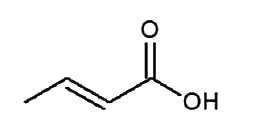XDil. H2SO4−−−−−−→BoilYZndust←−−−ΔQ where 1 mole Y on ozonolysis yields three moles of ethane - 1, 2 - dial, X and Q respectively are
Napthalene, Phenol
Benzene sulphonic acid, Nitrobenzene
Benzene sulphonic acid , Phenol
Phenol, Toluene
The correct Answer is:C
To solve the problem step-by-step, we need to analyze the information given and deduce the identities of compounds X and Q based on the reactions described.
Step 1: Understanding the Reaction of X
The reaction given is:
XDil. H2SO4→BoilY
This indicates that compound X is treated with dilute sulfuric acid and then boiled to produce compound Y.
Step 2: Analyzing Compound Y
We know that 1 mole of Y, upon ozonolysis, yields three moles of ethane-1,2-diol (which has the structure HO-CH2-CHOH-CH2-OH). This suggests that Y must contain a structure that can produce three moles of this diol upon cleavage.
Step 3: Identifying Compound Y
Since ozonolysis typically cleaves double bonds, and we are producing three moles of ethane-1,2-diol, we can infer that Y is likely a compound with multiple double bonds.
Given that the ozonolysis of Y yields three moles of ethane-1,2-diol, Y must be a compound that can be represented as a triene (a compound with three double bonds). The simplest structure that fits this description is benzene (C6H6) because it can undergo ozonolysis to yield the required products.
Step 4: Identifying Compound Q
The reaction of Q is:
YZn dust←ΔQ
Since we have determined that Y is benzene, we need to find a compound Q that can be converted to benzene by reduction with zinc dust.
A common precursor to benzene that can be reduced to yield benzene is phenol (C6H5OH). Therefore, we conclude that Q is phenol.
Step 5: Identifying Compound X
Now, we need to identify X, which is a compound that, when treated with dilute sulfuric acid and boiled, yields benzene. The compound that fits this description is benzene sulfonic acid (C6H5SO3H). When benzene sulfonic acid is treated with dilute sulfuric acid and boiled, it undergoes desulfonation to yield benzene.
Conclusion
Thus, we can summarize our findings:
- X is benzene sulfonic acid (C6H5SO3H).
- Y is benzene (C6H6).
- Q is phenol (C6H5OH).
Final Answer
- X = Benzene sulfonic acid
- Q = Phenol
The reaction given is:
XDil. H2SO4→BoilY
We know that 1 mole of Y, upon ozonolysis, yields three moles of ethane-1,2-diol (which has the structure HO-CH2-CHOH-CH2-OH). This suggests that Y must contain a structure that can produce three moles of this diol upon cleavage.
Since ozonolysis typically cleaves double bonds, and we are producing three moles of ethane-1,2-diol, we can infer that Y is likely a compound with multiple double bonds.
The reaction of Q is:
YZn dust←ΔQ
Now, we need to identify X, which is a compound that, when treated with dilute sulfuric acid and boiled, yields benzene. The compound that fits this description is benzene sulfonic acid (C6H5SO3H). When benzene sulfonic acid is treated with dilute sulfuric acid and boiled, it undergoes desulfonation to yield benzene.
Thus, we can summarize our findings:
- X is benzene sulfonic acid (C6H5SO3H).
- Y is benzene (C6H6).
- Q is phenol (C6H5OH).
- X = Benzene sulfonic acid
- Q = Phenol
Topper's Solved these Questions
- HYDROCARBONS Book:NARAYNAChapter:HYDROCARBONS Exercise:EXERCISE - 2 (H.W) (PREPARATION & PROPERTIES)
Explore 5 Videos
- HYDROCARBONS Book:NARAYNAChapter:HYDROCARBONS Exercise:EXERCISE - 3
Explore 25 Videos
- HYDROCARBONS Book:NARAYNAChapter:HYDROCARBONS Exercise:EXERCISE - 2 (H.W) (ALKENES) (PREPARATIONS OF ALKENES)
Explore 2 Videos
- GENERAL ORGANIC CHEMISTRYBook:NARAYNAChapter:GENERAL ORGANIC CHEMISTRYExercise:Matrix-Match type questions
Explore 7 Videos
- HYDROGEN & ITS COMPOUCDSBook:NARAYNAChapter:HYDROGEN & ITS COMPOUCDSExercise:Interger type questions
Explore 10 Videos
Similar Questions
Knowledge Check
XDil.H2SO4−−−−−−→BoilYZndust←−−−ΔQ where 1 mole Y on ozonolysis yields three moles of ethane-1,2-dial, X and Q respectively are
ANapthalene,phenolBBenzene sulphonic acid, nitrobenzneCBenzene sulphonic acid, phenolDThenol, TolueneH−C≡C−HHgSO4−−−−−−→H2SO4dil.NaOH−−−−−→Δ−−→P. The final product P is
A B
B C
C D
D
C6H6HNO3−−−→H2SO4XCl2−−−→FeCl3Y
In the above sequence Y can beAortho or p-ChloronitrobenzeneB3-NitrochlorobenzeneConly 4-NitrochlorobenzeneDequal mixture of all the above products
ZnXdil.H2SO4−−−−−→AColourless gas+B A overset(K_(2)Cr_(2)O_(7))(rarr)Y(Yellowturnbty)+ Green Solution.
Then X is
View SolutionIn the reaction
CH3CN+2HHCl−−→etherXH2O−−→ΔY, Y is
View SolutionX(i)HCN−−−−−−−−→(ii)dil.H2SO4 2-Hydroxypropinoinc acid
The structure of X is
View Solution underset (Conc. H_(2)SO_(4))overset(Conc. HNO_(3))toP underset(Delta)overset(Sn, Conc. HCl)toQ
underset (Conc. H_(2)SO_(4))overset(Conc. HNO_(3))toP underset(Delta)overset(Sn, Conc. HCl)toQ
The product Q is :
View Solution(A)HgSO4−−−−−−→dil.H2SO4(B)LiAlH4−−−→(C)recemic mixture
∴ reactant (A) is :
View Solution


